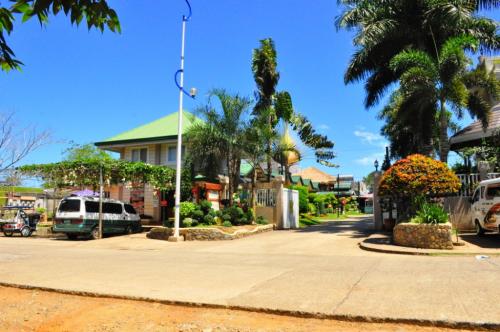Cagayan
Aparri Delta is located in Cagayan, Philippines. Walk unto the vast expanse of Aparri Delta, and see first hand the beauty of Cagayan's water resources. A great point of interest for tourists would be the sight of Cagayan River meet with the China Sea. Source: FlyPhilippines.com
San Esteban
Apatot Beach is located in San Esteban, Ilocos Sur Philippines. What used to be an area used by the US military during the World War II, is now currently one of the favorite places for picnic gatherings. Source: FlyPhilippines.com.ph
Apayao
The Apayao River is located in Apayao, Philippines. Stretching 6 Apayao municipalities, the Apayao River is one of the few rivers that remains unpolluted in existence. The river can be navigated by water boat, and the sight of various fishes and water falls are exquisitely refreshing. Source: NSCB.gov.ph
Calumpit
Apo Iru Gatbuca is located in Calumpit, Bulacan, Philippines. Known as "Pottery Country", Apo Iru Gatbuca is the biggest producer of pots in the whole of Bulacan. So vast is the pot-making industry that most residents make their living out of pottery. Local artisans transform an ordinary mass of clay into an exquisite work of art - some of which are even made into glazed decorative ceramics. Source:Flyphilippines.com.ph
Sablayan
Apo Reef National Park is located in Apo Island, Sablayan, Occidental Mindoro, Philippines. One of the dive sites frequented by most divers in the Philippines is Apo Reef. It is acclaimed as one of the best in Asia and as a diving mecca in the Philippines. It is a 34-kilometer reef teeming with the bio-diversity of marine life is located 20 miles west of Mindoro proper, with a narrow channel running east to west, dividing this reef into two lagoon systems is the north and south. Underneath, the clean waters, fine white sand and numerous coral are visible. The Apo Reef Marine Park includes the fascinating bird-populated island of Binangaan and Cajos del Bajo. The island has a variety of bird species that lures birdwatchers and nature lovers. The waters surrounding the island are abundant with marine fauna and luxuriant coral growth represented by approximately 400-500 kaleidoscopic coral species. Marine life includes varieties of sharks, sting rays and manta rays. There are over 500 species present in the Reef. Source:Visitmyphilippines.com
Cuyapo
Apolinario Mabini Marker is located in Cuyapo, Nueva Ecija, Philippines. In a house in Cuyapo, a marker was installed where Apolinario Mabini, the sublime paralytic was arrested by the Americans in December 10, 1899. Source:Nuevaecija.gov.ph
Tanauan City
Apolinario Mabini Shrine is located in Brgy. Talaga, Tanauan City, Batangas, Philippines. The shrine is a memorial to the nationalism of the "Sublime Paralyctic" whose moral convictions and political principles inspired the Filipinos in their search for national identity. It houses the remains and personal memorabilia of the late revolutionary hero, Apolinario Mabini, who is also known as the "Brains of Katipunan." Source:Visitmyphilippines.com
Dumaguete City
Fronting the Capitol, the Benigno Aquino Freedom Park is a sprawling park with landscaped gardens and fountains. It is the site of the annual provincial festival of festivals called Buglasan. During this period in October, you will see the park transformed into what looks like a village—towns and cities put up their booths, and restaurants set up shop with outdoor tents. Wide expanse of green lawns and old trees with flower borders, a musical fountain, and the Aquino stage for promenading and lounging; right in front of the imposing Capitol building. Source:South Travels
Arakan
This green valley in Arakan, a third-class municipality in North Cotabato, is famous for its rich wildlife resources and biodiversity. Aside from being a home for the endangered Philippine eagle, the valley also serves as an ancestral domain of the Manobo people. Source: Flickr.com
Bago City
The Araneta Monument is a life size replica of Gen. Juan A. Araneta on horseback. It depicts the momentous event when the legendary hero was leading his troops armed only with nipa stalks and rolled sawali mats painted black; in an attack leading to the historic bluff that liberates Negros from Spanish Conquestadores in 1898. Within the foundation of the said monument are the remains of the late gallant leader and hero of Bago. More about Araneta Monument.
